Magnetite and Lodestone
Magnetite and Lodestone are two varieties of the same material. Magnetite is a mineral commonly used as an Iron ore and is the most magnetic naturally occurring mineral.
Lodestone is a permanent magnet, but the majority of Magnetite is not. The leading theory currently is that this magnetism could be caused by lightning strikes.
Showing all 7 results
-
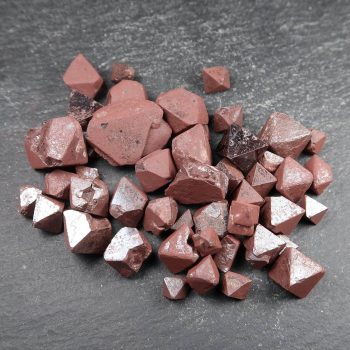
Magnetite Crystal Specimens
£1.00 – £7.00 -
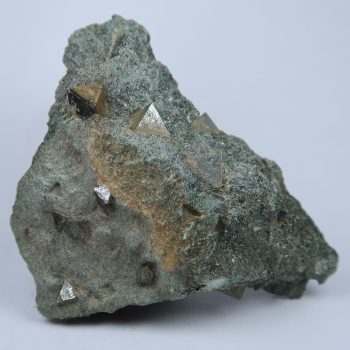
Magnetite crystals in matrix
£4.00 -
New
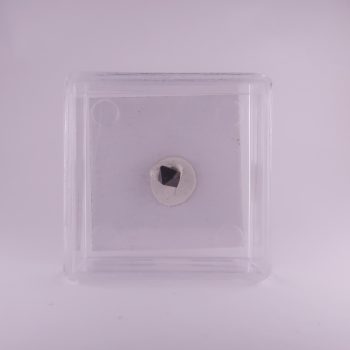
Magnetite from Gassetts, USA
£3.00 -
Updated
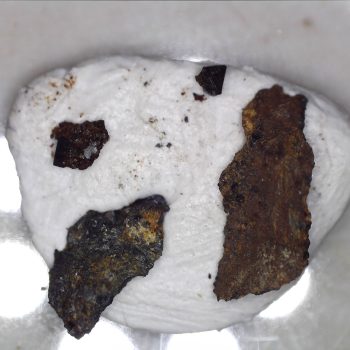
Magnetite from Haytor Mine, Devon
£1.00 – £1.50 -
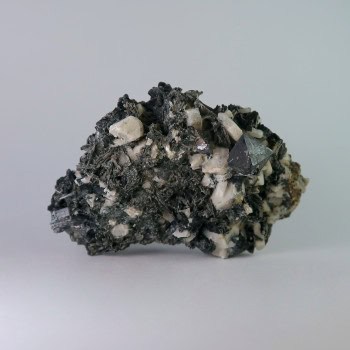
Magnetite from Imilchil, Morocco
£7.50 -
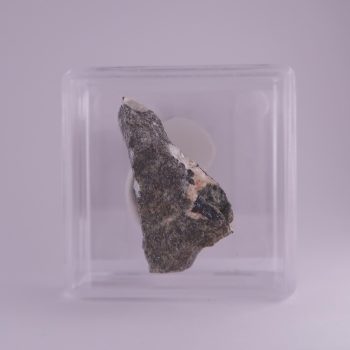
Magnetite from Port Muck, Northern Ireland
£5.00 -
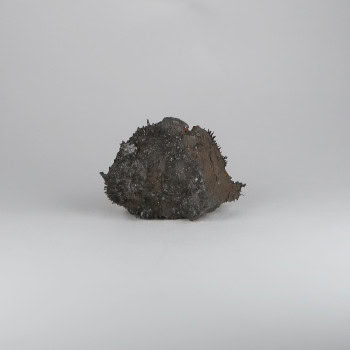
Magnetite specimens from Iron Mountain, Utah, USA
£3.50
Appearance, Uses and History
Magnetite is one of the most important ores of Iron still used today – a banded sedimentary rock called taconite, a mixture of magnetite, hematite, and chert.
Magnetite is sometimes found in beach sand, in large quantities, where it is known as black sand.
Magnetite is extremely magnetic, attracted to a magnet. However, it is not a naturally occurring magnet. In certain areas, magnetite can affect navigation with a compass.
Lodestone is a naturally magnetic form of Magnetite, which acts as a magnet and does attract tiny particles of Iron. It is theorised that Lodestone is caused by lightning strikes to pieces of ground with high magnetite content near to the surface.
Historically, pieces of lodestone were used as a primitive form of compass.
Magnetite forms part of the natural abrasive known as emery (a mixture of magnetite and corundum), although use of the natural emery has been superseded by a synthetic emery made by combining magnetite and aluminium oxide particles.
As an igneous rock forms, tiny crystals of magnetite may form inside. Due to their magnetism, they align themselves with the Earths magnetic field, which preserves the orientation of the Earths magnetic field at the moment of crystallisation. This means geologists are able to study the crystals and learn more about any changes to the magnetic field.
Locales
Magnetite is found worldwide, with significant deposits in numerous countries, most of which is not of any interest to mineral collectors due to its ‘massive’ nature.
Black sands can be found in Hong Kong, California, India, and New Zealand.
Large deposits of Magnesite can be found in Australia, Chile, Uruguay, Sweden, the USA, Mauritania, Romania, Norway, Ukraine and Peru.
For collectors, popular locales include
- Valais in Switzerland
- Nordmark in Sweden
- Kola in Russia
- Parachinar in Pakistan
- Potosi in Bolivia
- Several states of the USA, including Vermont, New York, New Jersey, and Pennsylvania.
Mineralogy
Hazards and Warnings
Almost all rocks, minerals (and, frankly, almost all other substances on earth) can produce toxic dust when cutting, which can cause serious respiratory conditions including silicosis.
When cutting or polishing rocks, minerals, shells, etc, all work should be done wet to minimise the dust, and a suitable respirator or extraction system should be used.
Translations
Arabic:
- ماغنتيت
Hindi:
- मैग्नेटाइट
Portuguese:
- magnetita
Bengali:
- ম্যাগনেটাইট
Indonesian:
- magnetit
Punjabi:
English:
- magnetite
- lodestone
Italian:
Russian:
- Магнетит
French:
- Magnétite
- Fer oxydé magnétique
Japanese:
- 磁鉄鉱
Spanish:
- Magnetita
German:
- Magnetit
Korean:
- 자철광
Thai:
- แมกนีไทต์
Gujurati:
- મેગ્નેટાઇટ
Mandarin and Traditional Chinese:
- 磁鐵礦
Urdu:
- میگنیٹائٹ
